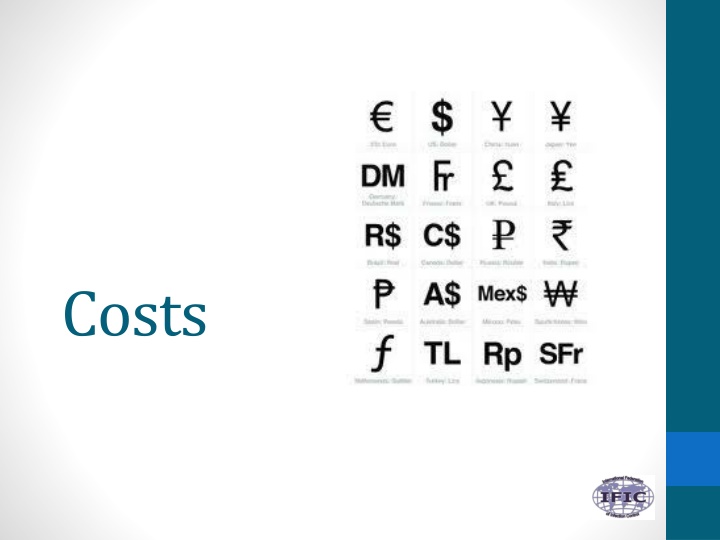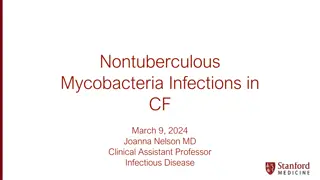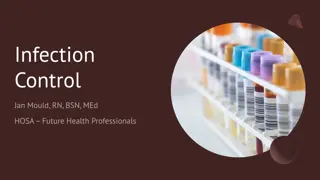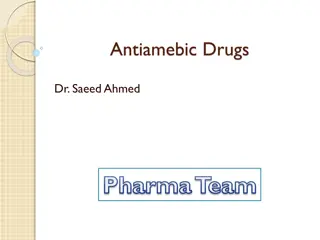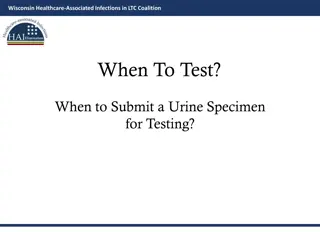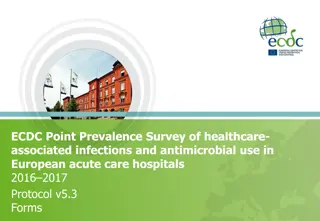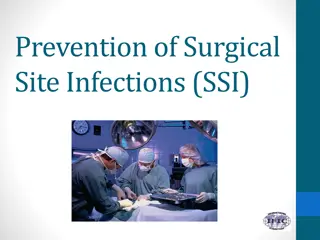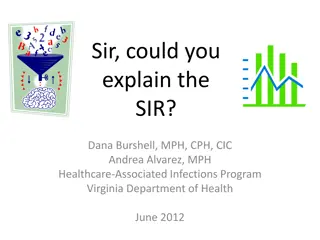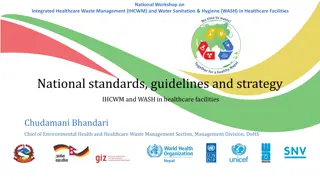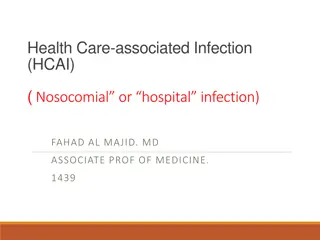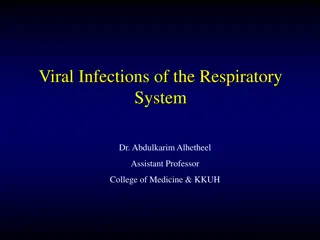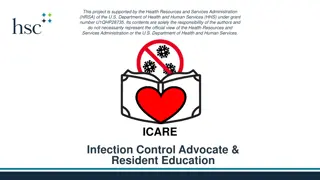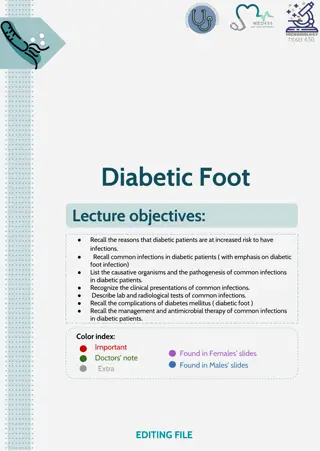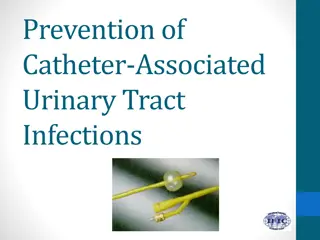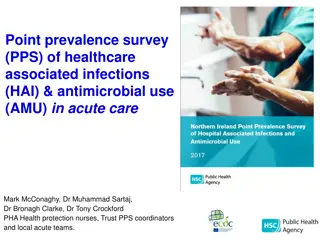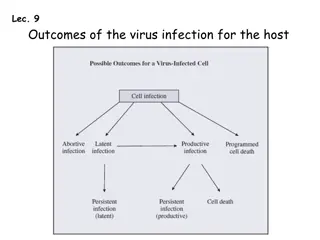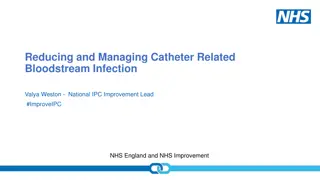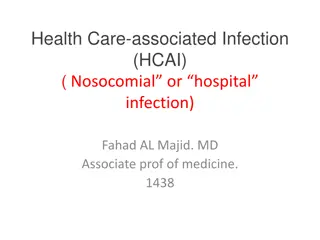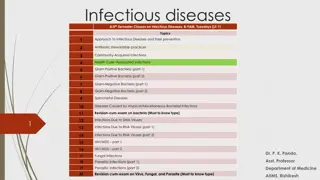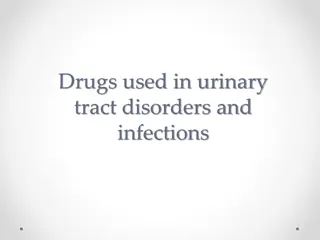Economic Impact of Healthcare-Associated Infections
The financial implications of healthcare-associated infections (HAIs) on individuals and organizations, including costs, economic consequences, and key points related to HAI management. Learn about types of costs associated with HAIs, cost estimates, and types of economic evaluations to assess the impact of HAIs on healthcare systems.
Download Presentation

Please find below an Image/Link to download the presentation.
The content on the website is provided AS IS for your information and personal use only. It may not be sold, licensed, or shared on other websites without obtaining consent from the author.If you encounter any issues during the download, it is possible that the publisher has removed the file from their server.
You are allowed to download the files provided on this website for personal or commercial use, subject to the condition that they are used lawfully. All files are the property of their respective owners.
The content on the website is provided AS IS for your information and personal use only. It may not be sold, licensed, or shared on other websites without obtaining consent from the author.
E N D
Presentation Transcript
Learning objectives December 1, 2013 1. Describe the financial impact that healthcare-associated infections have on individuals and organisations. 2. Outline the types of costs associated with HAIs. 2
Time involved December 1, 2013 30 minutes 3
Key Points December 1, 2013 Healthcare-associated infections (HAI) delay discharge, increase costs HAIs add to numbers of laboratory and diagnostic investigations HAIs increase infection prevention and control costs, including investigations and medical, nursing and management time 4
Economic Consequences Use of antibiotics December 1, 2013 Hospitalisation Costs Increased length of hospitalisation Potential intensive care unit stay Tests performed Intervention Costs Barriers used (e.g., gown, gloves) Nurse/physician time Potential need for an isolation room Physician visits Outpatient/Community Care Costs Use of antibiotics Home health visits Rehabilitation center stay Mortality Patient Costs/Outcomes Morbidity Lost wages 5 Travel expenses
Cost Estimates December 1, 2013 Studies generally focus on Severity of healthcare-associated infections Risk for patient safety Study in England, 1994-5 4,000 patients 7.8% of patients had an HAI 2.5 times longer length of stay 2.8 times greater hospital costs 6
Types of Economic Evaluations - 1 December 1, 2013 Cost minimisation Cost effectiveness Cost benefit Cost utility The most preferred analyses are cost- effectiveness and cost utility 7
Types of Economic Evaluations - 2 December 1, 2013 Cost-effectiveness analysis compares interventions or products with different costs and different effectiveness Cost utility analysis the benefits of a specific intervention adjusted by health preference scores useful when are no expected mortality differences between interventions, only differences in physical well-being expressed as quality adjusted life years (QALY) 8
Types of Economic Evaluations - 3 Costs that can be measured Health care facility costs Health care facility charges Resources used Actual reimbursed charges Hospital costs are a useful measure Best reflection of the actual economic burden to the institution If only charges available, adjust the data using cost-to-charge ratios December 1, 2013 9
Costs of Outbreaks December 1, 2013 4-month outbreak of Klebsiella pneumoniae infection More than $300,000 in 2001 USA dollars MRSA in Canadian hospitals $42m - $59m Canadian dollars annually 10
Costs of Surgical Site Infections December 1, 2013 USA Low estimate $10,443 per infection in 2005 dollars High estimate $25,546 per infection in 2002 dollars 11
Costs of Ventilator-Associated Pneumonia USA Low estimate $11,897 per infection in 1999 dollars High estimate $25,072 per infection in 2005 dollars Argentina Extra costs US $2,255 December 1, 2013 12
Costs of Bloodstream Infections December 1, 2013 USA Range $5,734 - $22,939 per infection in 2003 dollars Italy Total cost averaged 9,000 (completed during 2004- 2006) Belgium Attributable cost 13,585 (presented 2003) Europe Excess cost 4,200 13,030 Mexico Excess cost US$ 11,591 Argentina Average US$4,888 13
Costs of Urinary Tract Infections December 1, 2013 USA Low estimate $589 per infection in 1998 dollars High estimate $758 per infection in 2006 dollars UK Extra cost estimated at 1,122 (~2006) 14
Cost-benefit of Infection Prevention and Control Study on the Efficacy of Nosocomial Infection Control (SENIC) of 1974-1983 USA hospitals with 1 full-time infection control nurse (ICN) per 250 beds, an infection control doctor (ICD), moderately intense surveillance, and systems for reporting wound infection rates to surgeons reduced healthcare-associated infection rates by 32% In other hospitals the healthcare-associated infection rate increased by 18% December 1, 2013 15
Infection Prevention and Control Align programs with organisational goals by: 1. Identifying areas in which the infection prevention and control program can support and enhances revenues 2. Avoiding excess costs for care, especially those related to HAIs 3. Identifying opportunities for cost reduction through value analysis 4. Participating in efforts to measure and prevent other adverse outcomes of care December 1, 2013 16
References Gianino MM, et al. A model for calculating costs of hospital-acquired infections: an Italian experience. J Health Organization Mngt. 2007; 21 (1): 39. World Health Organization. Threshold values for intervention cost- effectiveness by Region. www.who.int/choice/costs/CER_levels/en/index.html Perencevich E, et al. Raising Standards While Watching the Bottom Line Making a Business Case for Infection Control Intervention. Infect Control Hosp Epidemiol 2007; 28:1121-1133. Haley RW, et al. The efficacy of infection surveillance and control programs in preventing nosocomial infections in US hospitals. Amer J Epidemiol 1985; 121:182-205. Kilgore ML, et al. The Costs of Nosocomial Infections. Medical Care. 2008; 46 (1):101-104. December 1, 2013 17
Quiz 1. One of the most preferred cost analyses are cost- effectiveness. T/F? An analysis of cost of infections should include: a) Antibiotics b) Gown use c) Type of room d) All of the above The infection control team should never be concerned about costs of infections. T/F? December 1, 2013 2. 3. 18
International Federation of Infection Control IFIC s mission is to facilitate international networking in order to improve the prevention and control of healthcare associated infections worldwide. It is an umbrella organisation of societies and associations of healthcare professionals in infection control and related fields across the globe . The goal of IFIC is to minimise the risk of infection within healthcare settings through development of a network of infection control organisations for communication, consensus building, education and sharing expertise. For more information go to http://theific.org/ December 1, 2013 19
